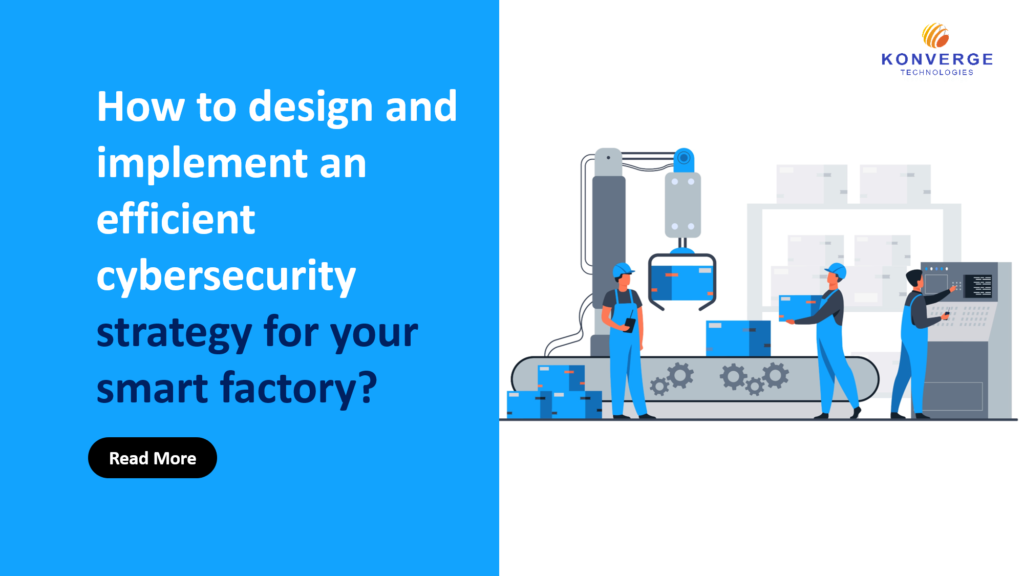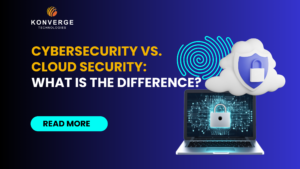
How to design and implement an efficient cybersecurity strategy for your smart factory?

A smart factory aka digital factory or intelligent factory is a concept where multitudes of digital technologies converge and synchronize to create a super-flexible connected factory that can learn various scenarios and adapt to them by itself. The prime characteristic of a smart factory is connectivity. Various systems and processes are interconnected with each other through a myriad of sensors, actuators, and other devices in order to create a cohesive manufacturing environment.
Maintaining secure connections among a vast array of smart devices and keeping external malicious forces away from such a complex network of IT (Information Technology) devices and OT (Operational Technology) devices is the major challenge involved in such hyper-connected ecosystems.
This article presents a step-by-step approach to implement a robust and efficient manufacturing cybersecurity program in your smart factory set up and enhance the cyber resilience of your smart factory.
1. Begin with a cybersecurity gap assessment
When aiming to build strong cybersecurity within a smart factory it pays to know where you stand. A cybersecurity gap assessment (also known as maturity assessment against an established standard) is the right point to start with. Various environments within the smart factory such as the OT ecosystems, IT systems, corporate networks, IP security, control systems, connected systems, and third-party risks related to industrial supply chain such as suppliers must be brought under the purview of the assessment. Such an assessment will reveal the gaps in the current policies and practices, which can be addressed in the formulation of a formal cybersecurity governance program, which naturally is the next step.
2. Formulate a cybersecurity governance program
3. Draw detailed risk profiles and prioritize the implementation of controls
Understand the systems that comprise your manufacturing ecosystem. Draw exhaustive analyses of risks associated with each system and assess the risk tolerance of your organization. Formulate risk mitigation strategies in line with that understanding. Include the senior management in the assessment of risk profiles and the implementation of mitigation strategies.
4. Implement the Cybersecurity policy
Implement appropriate security controls at the front end of your smart factory use cases. Make sure you include the vast range of controls and use cases in the program. Some of the critical controls to include are network segmentation models, enhancing the visibility of network assets and their activity in order to minimize the potential of disruption of production, secure remote access, access control and authentication management of removable media, better management of privileged access, and the implementation of efficient backup processes (which is extremely important in case of production- and safety-critical systems and configurations).
5. Make your employees active champions of cybersecurity
Cybersecurity program implementation doesn’t stop at drawing a plan and announcing its implementation across the organization. Also, the responsibility for cybersecurity doesn’t rest solely with the Chief Information Security Officer (CISO) and the IT team. It is the responsibility of every employee of the organization—right from the senior management team to the new hires and also third-party associates like vendors, suppliers, and critical supply chain links. Train your workforce in critical security controls and encourage them to follow the best safety and data security practices. Arrange for regular training sessions for them and make cybersecurity a top priority across the organization.
Conclusion
Cyber threats are real and breaches are happening around us. A cybersecurity breach can wreak havoc when it gains control over vital proprietary information and key manufacturing processes, which can cause humongous losses in terms of customer trust, revenue, and can sometimes even compromise employee safety. Acknowledging and understanding the need for cyber security is the need of the hour. Establishing a well-thought-out strategy to implement, monitor, and improvise cyber security measures can reward smart factories with much-needed cyber resilience in the ever-expanding, digitally connected manufacturing ecosystem.
We hope that the blog helped you to to design and implement an efficient cybersecurity strategy for your smart factory.
Are you looking for a trusted partner in devising your strategy to build cyber resilience in your smart factory?
Konverge Technologies can help you in achieving the goal. Write to us now to know more.
Check out our latest Tech blog on Intelligent Automation, cybersecurity and cloud computing solutions as follows
8 critical steps on your RPA journey that will ensure your success!
Best IT Managed Service Providers in India: 2021
What is Cloud Computing? Know it all about Cloud Computing and services
6 Common Types of Cyber Physical Attacks



